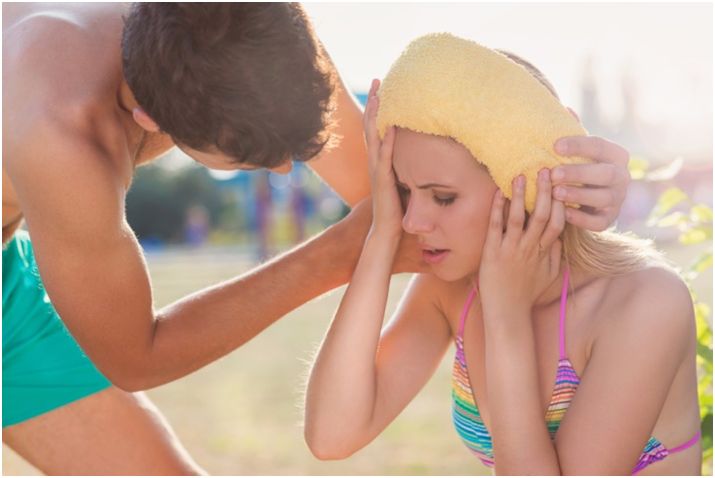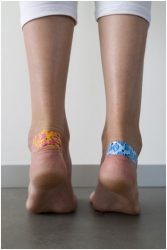
School is out ― awesome. The weather is nice ― fantastic. The pools are open ― perfect. Summer is always a magical time of year. However, summer also tends to be painful ― literally.
The hot temperatures and unusual activities that accompany summer fun can cause a number of bodily aches and pains that don’t immediately go away. Here are a few of the most common ways summer hurts and ways to overcome the discomfort and enjoy the remaining summer season.
Bright Sunshine
Most of the time, sunburns exhibit warmth, sensitivity, and achiness, but symptoms can become much more severe: swelling, blisters, chills, nausea, headache, and muscle fatigue. A sunburn may seem like a mere inconvenience, but in reality it is a severe problem that can affect health for a lifetime. Studies show that teens who experience five or more blistering sunburns have an 80 percent elevated risk of developing melanoma later in life ― and melanoma kills.
There are ways to prevent sunburn. During extended periods under the sun, the body forces the skin to produce extra melanin to develop a tan, which is the body’s only protection against UV rays. Unfortunately, most light-skinned people can’t develop a dark-enough tan to have an effective defense against the sun. Thus, everyone should apply SPF 30 sunscreen before going outside for any activity. Those who are lax about sunscreen protection and need quick relief for intense burns should stay hydrated, rest cool (not ice-cold) compresses on the burn, and apply all-natural aloe creams.
Summer Fun
The warm summer weather beckons most people outdoors, where they engage in activities they aren’t exactly accustomed to. Running, swimming, and other summertime exercises can cause sore muscles for a couple reasons.
Soreness that develops a day or so after a new activity is usually the result of growing muscles. During an effective workout, muscle fibers experience some trauma, which encourages the body to produce more muscle cells in the future. Before the muscle cells can develop, muscles and connective tissue become inflamed, causing pain. Massage and compression are some of the best ways to relieve this good soreness, as well as staying hydrated and sleeping well.Adults should also avoid dehydrating activities, like smoking cigarettes; replacing it with a less-drying habit, like vaping e-cigarettes, will keep everyone safer.
However, some people may develop less satisfying muscle soreness. Any sharp, stabbing pain may be indication that the body was worked too hard too fast, and something went wrong. Muscle strain can cause long-term disability, so treating it immediately is imperative. Rest, ice, and elevation are the best cures, but some people might want to seek medical advice to ensure the strain isn’t something more serious.
Hot Cars
Though the temperature might be pleasantly warm outside, inside a car, temperatures can increase 20 degrees in just 10 minutes, which can cause problems. The body can withstand temperatures upwards of 130 degrees Fahrenheit for short bursts, but an extended period of time in a space above 100 degrees Fahrenheit will cause cells to begin dying. Usually, too much time in a hot car causes heatstroke, with is exceedingly deadly.
Most cities issue frequent warnings about leaving children and pets in the car during outings, as their smaller bodies more easily succumb to heatstroke, but adults have much to fear, as well. Driving a car without air conditioning on a hot day may cause exhaustion and syncope (fainting) as well as more serious symptoms, like seizures, disorientation, and loss of consciousness.
Fortunately, it is incredibly easy to avoid the dangers of hot cars. During the summer, no living creature should ever be made to wait inside a locked car without A/C. People should carry sunshades to place in windows while parked as well as plenty of water to stay cool and hydrated while driving.
Uncomfortable Shoes
 In the soles of the feet, there exist blood vessels specially designed to release the body’s excess heat. That’s why, in the dead of winter, most people love fluffy socks, and in the dog days of summer, most people slip on sandals. Unfortunately, summertime shoes usually cause all sorts of aches and pains that limit a person’s fun.
In the soles of the feet, there exist blood vessels specially designed to release the body’s excess heat. That’s why, in the dead of winter, most people love fluffy socks, and in the dog days of summer, most people slip on sandals. Unfortunately, summertime shoes usually cause all sorts of aches and pains that limit a person’s fun.
Sandals may look stylish and feel cool, but most strappy shoes lack the features that keep feet and bodies healthy. For example, few sandals feature arch support, which aligns the legs and hips to prevent aches, cramps, and muscle fatigue. Additionally, certain shoes can cause uncomfortable (and unsightly) blisters and calluses all over feet and ankles.
The best advice a podiatrist can give for summer footwear is “plan ahead.†Just as you bring a sweater to a cold movie theater, you can bring comfortable walking shoes to don during your commute and switch to flashy sandals at your destination. When attempting the trendy sock-and-sandal look, people should avoid socks that contain any amount of cotton, which traps sweat and causes blisters. Finally, shoes with the perfect fit rarely cause problems, so getting measured is central to avoiding summertime foot pain.